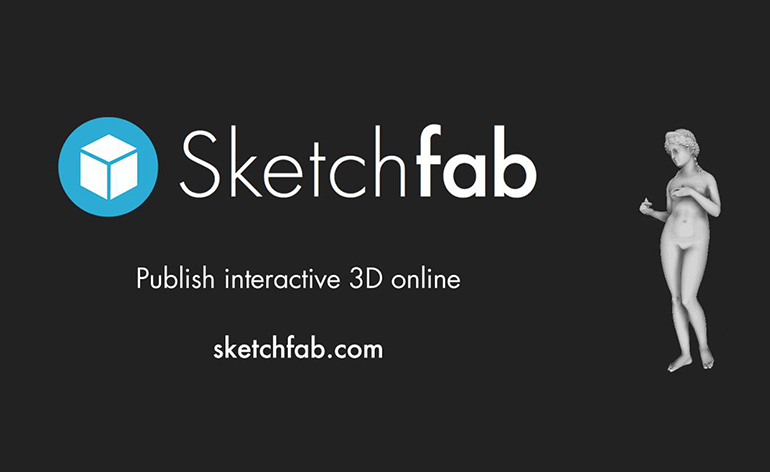As we delve deeper into the 2020s, the high-definition (HD) video production landscape continues to evolve at a breakneck pace. Technological advancements are driving new creative opportunities, and professionals in the industry need to keep abreast of the latest trends and innovations to stay competitive. In this article, we’ll explore some of the most promising developments in HD video production, touching on groundbreaking camera technology, artificial intelligence, and emerging formats that are shaping the future of the industry.
Camera Technology: Beyond 4K and 8K Resolution
The development of camera technology has been a driving force in the evolution of high-definition video production. While 4K and 8K resolutions are the current standards, researchers are constantly exploring ways to push beyond these resolutions. New ultra-high-resolution cameras are being introduced that can capture 16K or even 32K resolution video, enabling unprecedented levels of detail and creative possibilities, particularly for visual effects, virtual reality, and large-scale projection applications.
Another area of innovation in camera technology is the use of computational photography techniques to enhance image quality, such as capturing images with extended dynamic range and depth of field. This can result in more realistic and visually compelling images, especially in applications like virtual and augmented reality.
Artificial intelligence (AI) is also increasingly important in camera technology. AI-powered cameras can automatically adjust focus, exposure, and other settings to optimize image quality, and AI algorithms can perform tasks like object removal, color grading, and noise reduction in post-production, making the process faster and more efficient.
Additionally, the development of new camera form factors is expanding the creative possibilities for high-definition video production. For example, small, lightweight cameras are making it easier to capture footage in challenging environments, while 360-degree cameras are opening up new opportunities for immersive video experiences.
Overall, the future of camera technology looks promising for high-definition video production. With new advances in resolution, computational photography, AI, and form factor, the possibilities for creative expression are expanding rapidly.
Computational Photography and AI-Enhanced Video Production
Artificial intelligence (AI) is revolutionizing video production workflows by automating tasks like object removal, color grading, and noise reduction. AI algorithms are being used to analyze footage and automatically select the best shots, removing unwanted objects from scenes, and applying color grading and noise reduction. In the future, AI is expected to play an even more prominent role in the production process, from automatic shot framing and selection to real-time visual effects and virtual set extensions.
Moreover, computational photography techniques are enabling cameras to capture images with extended dynamic range and depth of field. These techniques involve the use of algorithms and computer processing to enhance the quality of images captured by a camera, resulting in more realistic and visually compelling images, particularly in applications like virtual and augmented reality.
The combination of computational photography and AI-enhanced video production is transforming the high-definition video production landscape by enabling professionals to capture and produce video with improved image quality and greater creative control. Cameras can now capture images with extended dynamic range and depth of field, and AI algorithms can be used to automatically adjust exposure, contrast, and other settings to optimize image quality, making it easier to capture high-quality footage in challenging lighting conditions.
In addition to improving image quality and creative control, AI-enhanced video production can also save time and reduce costs. Object removal and other post-production tasks that were previously done manually can now be automated, freeing up time for other creative tasks.
Overall, the combination of computational photography and AI-enhanced video production is making it easier for professionals to capture and produce high-quality video content. As these technologies continue to evolve and become more widespread, we can expect to see even more innovative applications in the field of high-definition video production.
The Rise of Light Field Cameras
Light field cameras represent a significant technological advancement in the field of photography and videography. Traditional cameras capture images by measuring the intensity of light at a single point in space, while light field cameras capture the direction and intensity of the rays of light at each point in space, allowing them to capture much more information about the scene. They use an array of micro-lenses or a specialized sensor to capture the entire light field, enabling photographers and videographers to adjust the focus, depth of field, and perspective in post-production and giving them greater creative control over the final product.
One of the key advantages of light field cameras is their flexibility in post-production. With traditional cameras, the focus, depth of field, and perspective are fixed at the time of capture. In contrast, light field cameras allow for adjustments to these parameters after the fact, making post-production much more dynamic and creative. Another advantage is that light field cameras can capture more information about the scene than traditional cameras, producing more realistic images and videos with greater depth of field and bokeh. Moreover, their ability to capture the entire light field enables the creation of immersive experiences like virtual and augmented reality.
While light field cameras are still relatively new, they are already being used in professional photography and videography as well as scientific imaging and research. As the technology continues to evolve and become more widely available, we can expect to see even more creative and innovative uses of light field cameras in the future.
HDR and Wide Color Gamut: The Next Standard in Visual Quality
High Dynamic Range (HDR) and Wide Color Gamut (WCG) technologies are pushing the boundaries of color and contrast, enabling more vibrant and lifelike visuals. As HDR and WCG become more prevalent, professionals in the HD video production industry must adapt their workflows and learn to take full advantage of these capabilities. This will involve mastering new color grading techniques, understanding HDR metadata, and acquiring hardware that supports HDR and WCG standards.
High Dynamic Range (HDR) and Wide Color Gamut (WCG) technologies are becoming the new standard in visual quality for high-definition video production. These technologies allow for greater color depth and contrast range, resulting in more vibrant, lifelike, and realistic images.
HDR technology enables the capture and display of a wider range of brightness levels, from deep blacks to bright highlights. Traditional video displays are limited to a range of 100 nits, while HDR displays can produce up to 10,000 nits, allowing for a much wider range of colors and brightness levels to be represented. This results in images that are more dynamic and true-to-life, with more detail in both bright and dark areas of the scene.
WCG technology expands the range of colors that can be displayed on a screen, allowing for a greater range of hues and shades to be represented. Traditional displays are limited to the Rec. 709 color gamut, while WCG displays can produce up to 100% of the DCI-P3 color gamut, which is used in digital cinema. This allows for a wider range of colors and more accurate color reproduction, resulting in images that are more vivid and true-to-life.
The combination of HDR and WCG technologies creates a more immersive viewing experience for audiences, allowing them to see images that are closer to what the human eye can perceive. HDR and WCG technologies also present new creative opportunities for high-definition video production. With these technologies, professionals can create more vibrant and lifelike images, bringing their creative vision to life in new and exciting ways.
However, working with HDR and WCG content requires specialized knowledge and tools. Professionals in the high-definition video production industry must adapt their workflows and learn to take full advantage of these capabilities. This involves mastering new color grading techniques, understanding HDR metadata, and acquiring hardware that supports HDR and WCG standards.
In conclusion, HDR and WCG technologies are quickly becoming the new standard in visual quality for high-definition video production. These technologies allow for greater color depth and contrast range, resulting in more vibrant, lifelike, and realistic images. As these technologies become more prevalent, professionals in the industry must adapt their workflows and acquire the knowledge and tools necessary to take full advantage of these capabilities. The result will be more immersive and engaging video content for audiences to enjoy.
Immersive Audio: Enhancing the Viewing Experience
As video quality reaches new heights, audio technology must keep pace. Immersive audio formats like Dolby Atmos, DTS:X, and Auro-3D are becoming more popular, allowing for the creation of audio experiences that envelop the viewer. As a result, audio professionals must develop new skills and adapt their workflows to incorporate these advanced audio formats.
Immersive audio is a rapidly advancing field that is revolutionizing the way we experience sound in high-definition video production. While traditional audio systems are limited to delivering sound in a two-dimensional plane, immersive audio enables sound to be placed and moved in a three-dimensional space, surrounding the viewer and creating a more immersive and realistic audio experience.
One of the most popular immersive audio technologies is Dolby Atmos, which uses object-based audio to allow sound designers to place sounds precisely in a three-dimensional space. With Dolby Atmos, sound can be moved freely around the listener, creating a more lifelike and engaging experience. This technology has been adopted in theaters, streaming services, and home theater systems.
In high-definition video production, immersive audio technology provides an exciting new dimension to storytelling. Sound designers can now create audio experiences that are more engaging and immersive than ever before. For example, the sound of rain can be positioned above the viewer’s head, and the sound of a car engine can be moved to different locations in a scene to match the visual perspective. This adds a new layer of realism and depth to the audio experience, enhancing the overall viewing experience.
Moreover, immersive audio can be used to create a more emotional connection with the audience. By creating an audio landscape that fully envelops the viewer, sound designers can help to transport the audience to a different world, heightening the emotional impact of a scene. Immersive audio can also be used to create tension and suspense, by placing sounds strategically around the listener.
As immersive audio technology continues to develop, we can expect to see even more innovative applications in high-definition video production. For example, advances in artificial intelligence could be used to automatically generate and place sounds based on the content of a scene. This could help to streamline the audio production process and create more consistent and high-quality audio experiences.
In conclusion, immersive audio is an exciting field that is transforming the way we experience sound in high-definition video production. With technologies like Dolby Atmos, sound can now be placed and moved in a three-dimensional space, creating a more realistic and engaging audio experience. As this technology continues to evolve, we can expect to see even more creative and innovative applications in the field of high-definition video production.
The future of high-definition video production is a rapidly evolving landscape, driven by technological advancements and creative innovations. From ultra-high-resolution cameras and AI-enhanced workflows to light field cameras and advanced color and audio technologies, the possibilities for visual storytelling and immersive experiences are expanding at an unprecedented rate. As professionals in the industry navigate these developments, they must adapt their skills, workflows, and equipment to stay ahead of the curve and take full advantage of the opportunities presented by these new trends and innovations. With the right tools and knowledge, the future of high-definition video production promises to be a truly exciting and dynamic era of creative expression.




